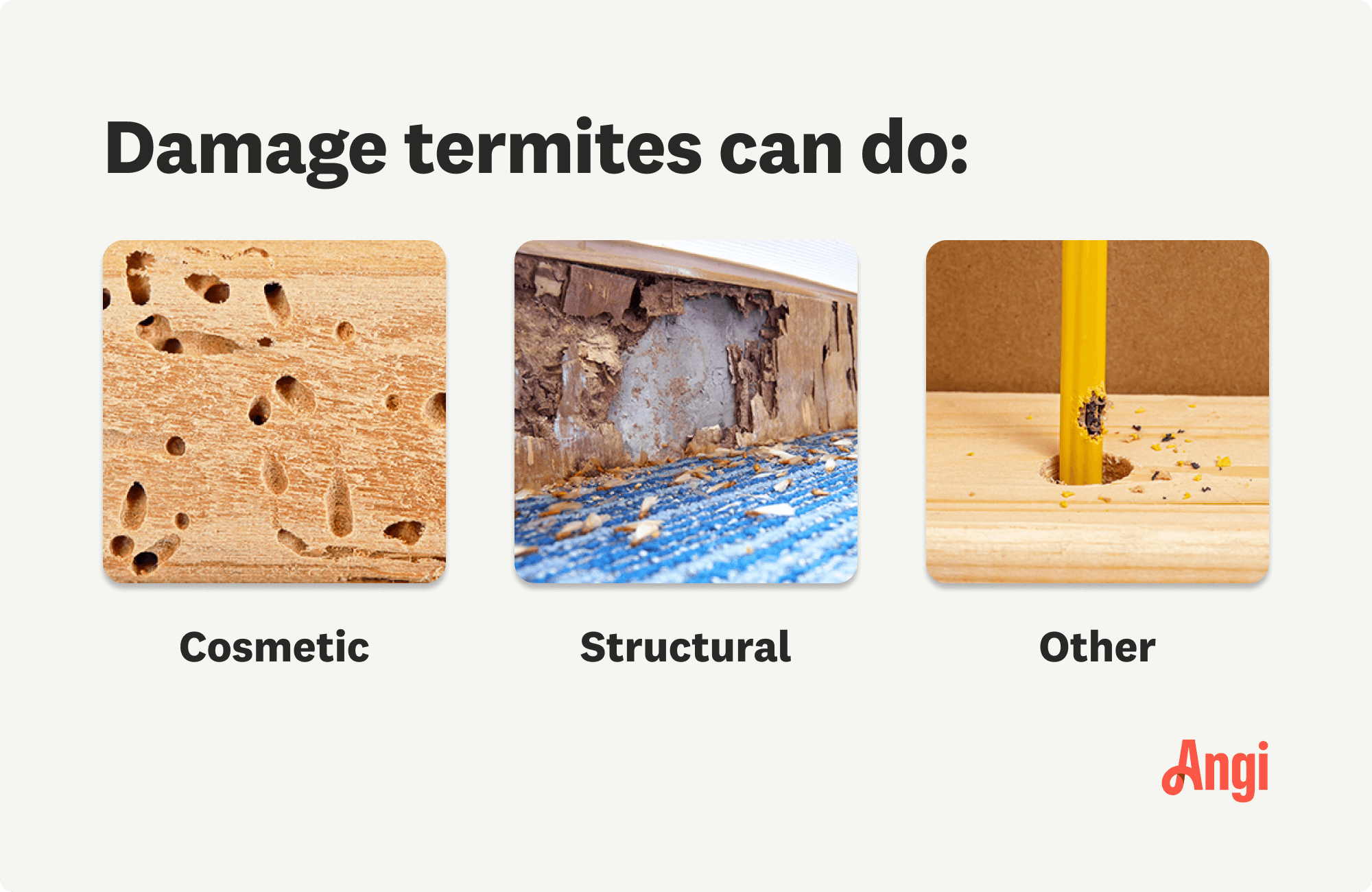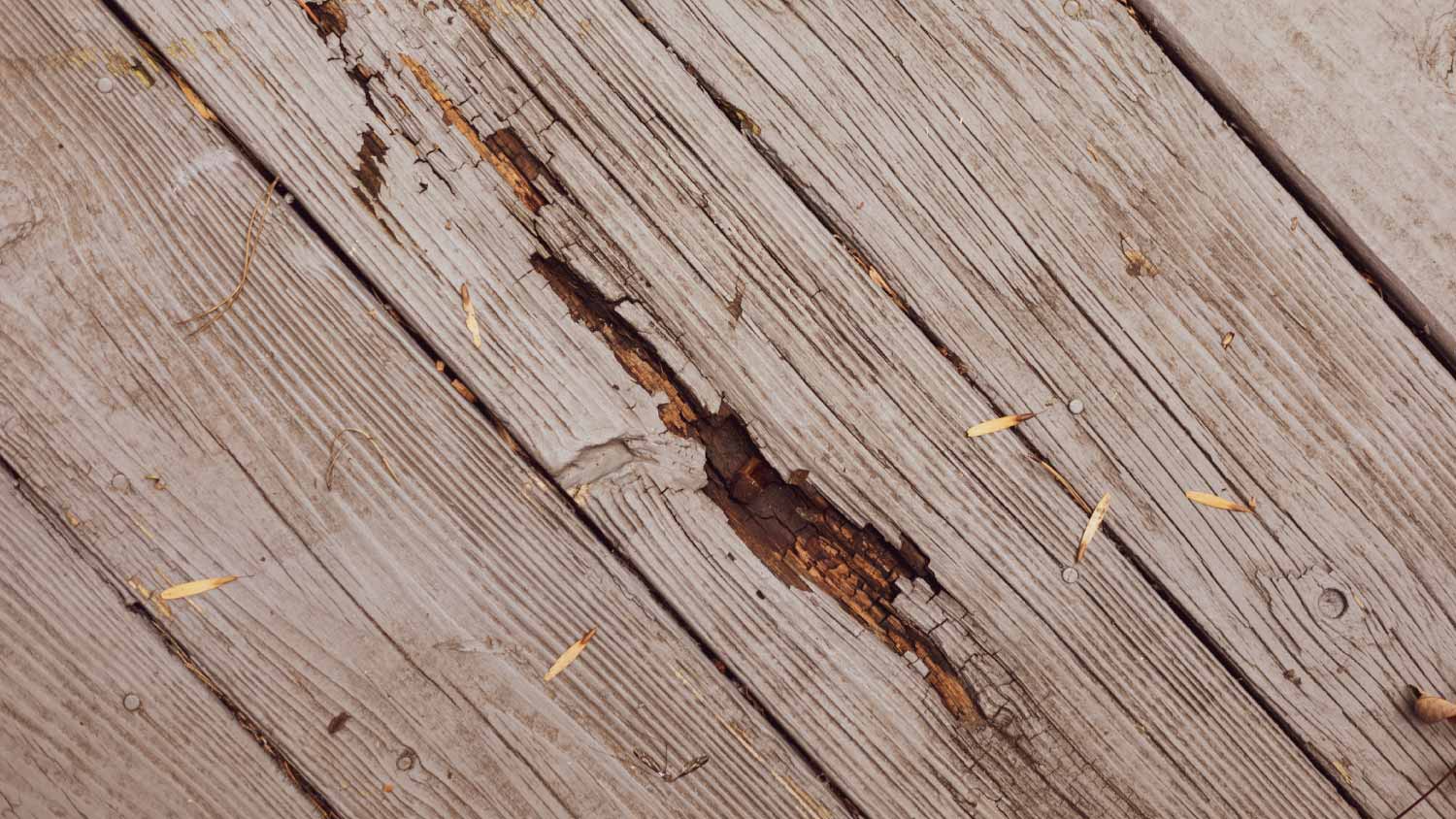How Long Does Termite Treatment Last?
Learn the maintenance timeline for your termite treatments


Liquid soil treatments for subterranean termites last around five years.
Wood treatments can last five to ten years or more.
Physical barriers such as stainless steel mesh last the longest, but they aren’t always 100% effective.
It’s always a good idea to get annual termite inspections to ensure the effectiveness of termite treatments.
Professional termite treatments last about five years, depending on the type of treatment method. For example, bait stations require frequent replacement to remain effective, while liquid treatments provide the most long-lasting results.
Learning how long termite treatments last is important for long-term prevention, and the timeline varies by the treatment. Let’s take a look at the different types of termite treatment and the duration of their effectiveness.

Liquid Barrier or Repellent Termiticides

Liquid termiticides last around five years on average. During this treatment process, a local termite control specialist will dig a trench around the perimeter of your home and pour or inject a liquid termiticide within the soil, establishing a barrier to keep out subterranean termites.
While these treatments can be very effective, termites may still find their way across the barrier, especially if there are any gaps present. It’s highly advisable to have annual termite inspections to detect potential future infestations before they can do any major damage.
Important factors:
Type of repellent or insecticide
Application site
Thickness of the barrier
Amount of exposure to moisture and weather
Termite Bait Stations
Termite bait stations can last for a few months, depending on the amount of termite activity. However, you’ll need to monitor termite bait stations year-round. For this type of treatment, a termite specialist will place baits strategically around your property. Then, termites take the poisonous bait while foraging, bring it back to their colony, and infect the other termites. This method can get rid of termites and potentially wipe out a colony, but it can take months for the termites to come across the bait.
Important factors:
Date bait station activated
Amount of exposure to moisture and weather
How quickly the bait is eaten and taken back to the colony
Wood Treatments

Wood termite treatments generally last five to ten years or more. These involve the application of termiticides directly to wooden structures of materials. They can be applied as a preventative during construction or as a treatment for an existing infestation. Durability can vary depending on factors, such as the type of wood, exposure to moisture, and other environmental conditions.
Important factors:
Type and durability of wood
Exposure to rain and moisture
Physical Barriers
Physical termite barriers can last decades or longer. Using materials such as stainless steel mesh, sand, and crushed stone, these barriers are designed to physically block termite entry. Barriers can also make termite activity more noticeable, allowing you to spot them and take quick action before they’ve caused major damage. Since this treatment method doesn't use chemicals, it will remain effective unless damage or regular wear and tear weaken its integrity over time.
Important factors:
Materials (wood, fiberglass, vinyl, or fiber cement)
Type of insulation foam
Exposure to the elements
Fumigation or Tenting
Termite fumigation is a treatment reserved for major infestations because it’s a days-long process that involves evacuating your home for 24 to 72 hours, wrapping your home in a tent, and blasting termite-killing chemicals. However, gas fumigation is one of the most effective ways of killing live termites, and the results should last about five years. While termite fumigation eradicates current termite infestations, you’ll need to prevent future unwanted guests from coming into your home in order to make the results last.
Important factors:
Number of access points remaining after fumigation
Number of termite colonies remaining in the region
Treatment Duration By Type of Termite
Consider choosing your type of treatment by the kind of termite infesting your home.
Subterranean Termites
Your treatment type will depend on the kind of infestation you have. Some termites are subterranean, meaning they live underground, creating virtual superhighways of tunnels and nests and entering your home through tiny cracks and crevices where the wood of your home meets the ground level.
Because subterranean termites build extensive networks belowground, gas fumigation is often one of the best strategies for treating them. In addition, all termites need moisture to survive, so one of the most important strategies for getting rid of subterranean termites is moisture removal, which ensures your home has proper drainage and all wooden structures are as free as possible of any dampness or decay.
Dampwood Termites
Another common type of termite is the dampwood, which is attracted to very moist areas, such as damp and decaying wood. If you have a dampwood termite infestation, one of the best strategies for whole-house treatment is the baiting approach. In addition to baiting, moisture removal is also essential to preventing or eradicating these termites.
Drywood Termites
The most common type of termite—and the one posing the greatest threat to most homes—is the drywood termite, which frequently infests structural wood in your home, as well as dry wooden fencing and even utility poles. This variety is both hearty and destructive, so it often requires a multipronged strategy to prevent and eradicate them.
To get the best results, gas fumigation is often combined with termiticide applications, including termiticide baiting. Moisture removal is also helpful but may not be as effective as it is with the other species.
How to Prevent Termites From Infesting Your Home
Termite prevention is an ongoing process. Even though you won't likely need annual termite treatment, it's still important to have an annual termite inspection performed by a pest control expert. That's because it can be challenging to detect termite damage until it's pretty far along. An annual inspection, though, will help you detect a potential infestation before too much damage has occurred. On average, the cost of a termite inspection from a top-rated exterminator is $170.
Follow these tips for warding off termites:
Don’t let moisture accumulate near home’s foundation
Repair leaky plumbing
Divert water from gutters and downspouts away from the home
Reduce moisture and humidity in basements and crawl spaces
Remove stump and dead wood from yard
Use termite-resistant mulch
Frequently Asked Questions
It depends on both the spot treatment and the termites. You can expect to see termites for up to several weeks before methods work to destroy a colony. If the colony is not fully destroyed, it will spring back quickly in the coming months. But once they are permanently gone, the colony is unlikely to start again. However, if there are other nearby colonies then a new queen may come seeking a home in the next year or two.
First, you’ll start noticing fewer flying termites in the air. Second, you’ll see fewer ground-based termites near the entrances to their colony, and eventually none at all. Third, if you have access to part of the nest like mud tubes, you can scour away a section and watch it. If the tubes don’t get repaired, the nest is probably doomed. Again, it can take several weeks for termites to fully go away, depending on the type of treatment.
Expect treated wood to prevent termites for up to 10 years. Around that point, chemicals in the treated wood start to drain out due to moisture and age, opening up the core of the wood for attack. Treated wood resists termites with powerful chemical preservatives. It will not help remove a current termite colony on your property, which you’ll need to destroy with bait stations and similar treatments. However, treated wood can keep termites from returning and can replace more vulnerable wood to prevent future damage to your home.
Basic termite treatments like setting bait traps don’t require vacating your house. Just make sure to keep your pets and young children away from the traps, and you shouldn’t have any problems.
If treatment involves spraying pesticides inside your house, you should leave the house for three to five hours after the spraying. A full fumigation requires leaving your home for three days minimum, along with a lot of prep work. Part of that prep is finding a hotel or relative to stay with until your pest control company says it’s safe to return.





- Pest Control Services
- Ant Exterminators
- Mosquito Control Companies
- Rodent Control
- Termite Control
- Bee Removal
- Animal Control
- Bed Bug Control
- Pest Inspection
- Flea Control
- Raccoon Control
- Skunk Control
- Spider Control
- Cockroach Control
- Bird Control
- Bat Control
- Opossum Control
- Snake Control
- Groundhog Removal
- 24 Hour Pest Control Services
- Bug Control
- Fumigation Companies
- Termite Tenting
- Lawn Pest Control Services










